
Though a few years ago controlled-environment farming, of which vertical farming is a sub-section, was touted as the best way to feed a growing population, now its future seems to hang in the balance.
“It’s worse than you described,” says Andrew Lloyd, deputy CEO and COO of Scottish tech firm Intelligent Growth Solutions (IGS), when asked if the vertical farming sector was struggling. “Many firms have already gone bust.”
“They are selling dreams they can’t fulfil,” says Jesper Hansen, chief commercial officer at Taiwan-headquartered YesHealth Group. “There’s been a lot of money available in the past decade for companies with big dreams like solving the world’s food problems or being a fully autonomous farm, but we still have decades in front of us to mature this industry.”
Soaring energy prices in Europe are just one external pressure to have exposed cracks in business plans, leaving start-ups vulnerable. In May, London-headquartered Infarm shuttered operations in the continent to focus on “regions better suited for indoor farming”. In April, New York-based Upward Farms threw in the towel after ten years, citing the “infinitely complex” industry.
But many remain confident in vertical farming’s future. “A lot of people forget about the positive aspects of companies failing right now,” says Ben Pieterse, founder of failed Netherlands-based vertical farming start-up Glowfarms who is now an analyst at agri-tech firm Stolze. “As an industry we have learned a lot.”
There is a consensus vertical farming will continue to take off in countries with lower food security and less annual growing potential – those that import vast quantities of food like the Middle East, with limited light for growing like the Nordics or difficult annual weather conditions like California and the UK.

US Tariffs are shifting - will you react or anticipate?
Don’t let policy changes catch you off guard. Stay proactive with real-time data and expert analysis.
By GlobalData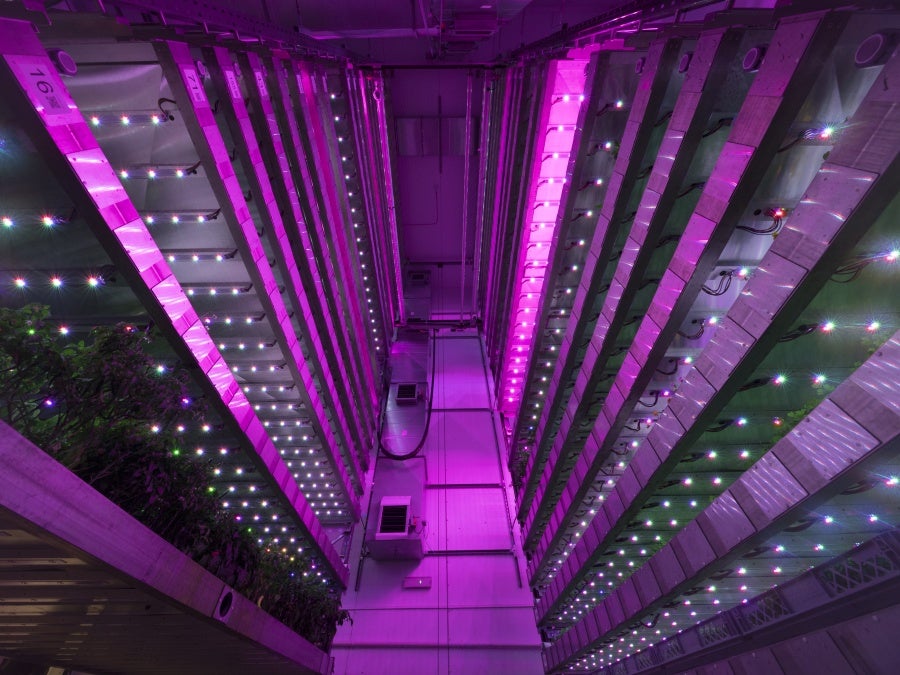
A need for collaboration
Combining vertical farming with other forms of agriculture, sharing technologies and treating controlled-environment production as supplementary to traditional farming come up time and time again as efficient ways to make the industry profitable.
From a technology perspective, there is a sense many start-ups wasted precious capital investment attempting to reinvent the wheel. “The people who have raised hundreds of millions of dollars to build their own technology, and their revenue is based upon the plants that they grow, are essentially trying to do two miracles at once,” says IGS’s Lloyd.
IGS manufacturers ‘growth towers’ for vertical farming, using smart technology which can be controlled remotely. He says multiple companies making unique machines that worked – physically and economically – was “always an unrealistic proposition”.
He says there are exceptions where specific tech is necessary, like in the pharmaceutical or beauty industries (producing flowers for perfume or medicinal cannabis, for example) – but this is “niche”.
This may seem an obvious plug from a company selling technology but Rabobank senior fresh produce analyst Lambert van Horen also envisages the market thinning and consolidating. “At the end of the day there will be a couple of systems who will survive. Especially in the technology side,” he says. “Then you can create economies of scale and your cost prices could compete with greenhouses and maybe in the end with outdoor [agriculture].”
In Canada, D2C producer Lufa Farms opened its first single-level indoor farm in May using greenhouse technology. Based in an industrial building in Montreal, Lufa works via a subscription model and previously only grew produce in rooftop greenhouses.
Vice president of finance Jean-Michel Vanier says the use of “proven” technologies was key. “Others are doing a lot of R&D. We’re going to do some as well… but we know that the system we’re using right now is already working. Our system is less complicated – for us it’s a no brainer.”
Daily running costs are expected to be similar to its other greenhouse sites, which require heating instead of light. He adds “in Quebec the cost of electricity is much lower than elsewhere. It’s green energy”.
“Altogether, this is a very attractive story, but I would like to wait until it’s in operation for a while before going back to the financials and seeing if it’s as profitable as we would like it to be,” Vanier says.
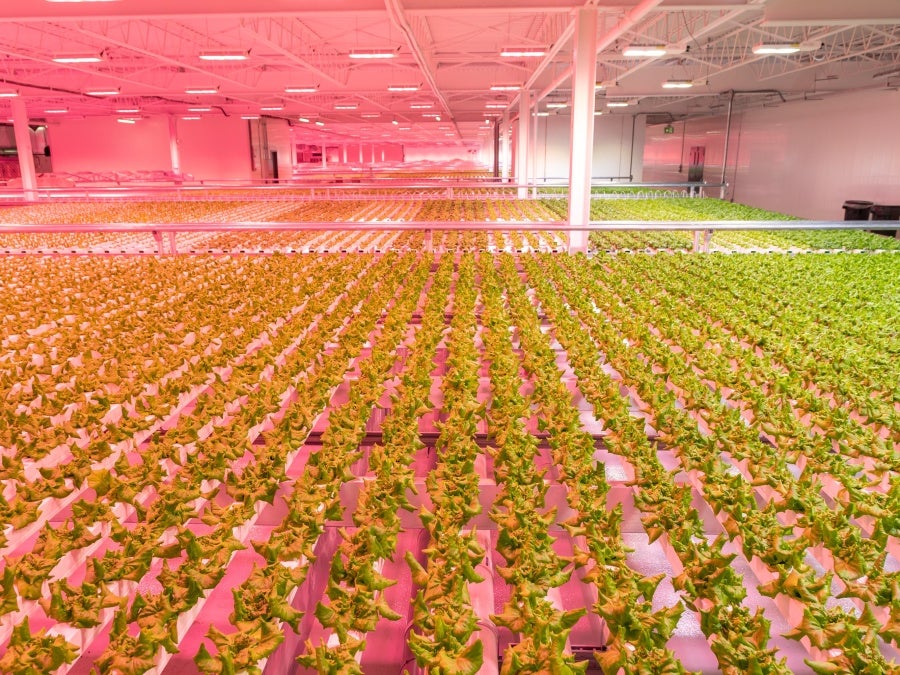
Dual-farming models
Hybrid models can also involve using two farming types to save time and money and avoid unsuitable weather conditions – for example by starting seedlings off in vertical farms and moving them to into greenhouses or outdoor farms.
Lloyd at IGS predicts this is “the changing role we will see of these vertical farms”. Around half of the 400 growth towers the tech firm has sold globally are being used in a hybrid model, and almost all those in the US will be used as plant nurseries.
Vertical farming nurseries can “dramatically cut the food miles associated with moving the starter plant from a traditional nursery to those glass houses”, he says. “You collapse the food miles, eliminate much of the waste and there’s no need to spray the plants for transportation as you’re unlikely to damage them.”
Pieterse says hybrid models will provide most opportunity for new businesses in the short term. Glowfarms created its own technology using “existing principles” but put “a lot of resources into scaling” the technology.
While he does not feel this was its biggest mistake, he says there is a real cost-saving opportunity in using “existing and standardised” technology. In the long term, he says “success lies in more research, more patience… and also the fact the climate will change and that will be in favour of vertical farms in the future.”
Mitigating energy costs in controlled-environment farms can be challenging. UK producer GrowUp Farms built a site next to a biomass power plant in Pepperness, Kent, so it could use its waste heat and purchase electricity directly.
“We’re able to use around 60% less electricity in our business with our colocation model,” founder Kate Hofman estimates. “Our production system is highly, highly controlled, but we do most of that control through using the waste heat from the power plant, not relying on the electricity.”
Buying directly from the generator also provides access to cheaper rates and protection from energy price increases.
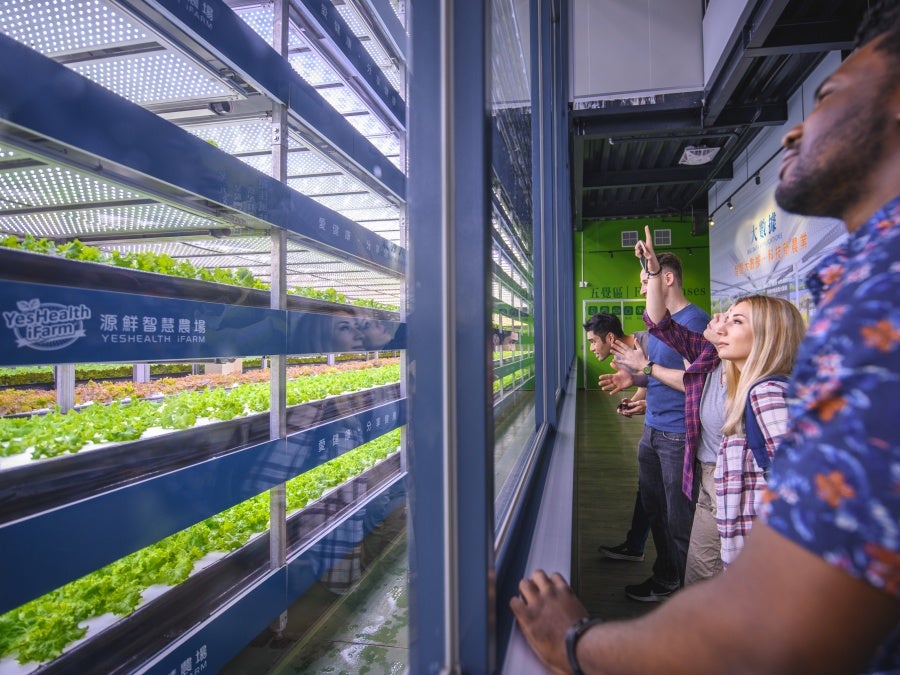
Policy-level collaboration
Collaboration is also being called for on a governmental level. While indoor farming is often spoken about as a “competitor” – or even replacement – to traditional outdoor production, many argue it should be viewed as a complementary farming method – and rewarded as such by policymakers.
Pieterse says a lack of government support was a significant barrier to Glowfarms’ success. “In the Netherlands, greenhouse and regular farmers are heavily subsidised and [vertical farms] need to compete with them, which sometimes seems a little unfair,” he says. “But that’s reality. We didn’t realise [it] enough, and others fail to do so as well in my view.”
In the UK, Lloyd says “there’s no doubt in my mind [vertical framing] is a political imperative for the government”. Following Brexit, and more recently UK-wide salad shortages, Lloyd says companies like supermarkets are approaching IGS to see whether they should enter the sector.
“They are all looking,” he says. “Few of the supermarkets wants to be farmers, but there they are encouraging their value chain or upstream supply chain to say okay, where does this thing fit? And how does it de-risk me from having empty shelves again?”
GrowUp Farms was the only vertical farm invited to the UK’s Farm To Fork conference in May – a first-of-its-kind summit to thrash out issues including food security and retailer/supplier relationships. “The scope of support to incentivise environmentally sustainable farming is actually limited to conventional production,” Hofman explains. She says the UK needs to work towards creating “a level playing field for businesses like ours to operate as suppliers.”
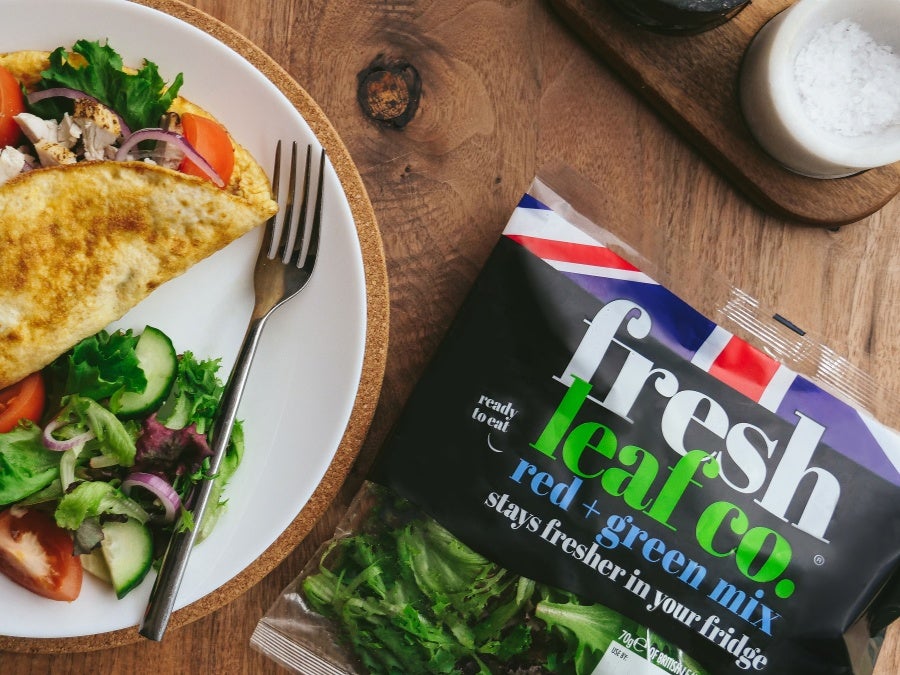
Identity crises: producers and tech companies
While sharing technology may save costs and shorten set-up time, unique and patented technology is attractive to investors, which most start-ups rely on.
“Sometimes just growing the plant is not sexy enough,” says YesHealth Group’s Hansen. “You need some kind of robot or AI or some justification for your valuation. That sounds cool, but in practice doesn’t necessarily work.”
YesHealth Group benefits from over a decade of trial and error, having set up it’s first R&D center in 2010. “We already have the know-how to operate the farm,” Hansen says.
The seduction of new agri-tech has arguably led some start-ups to receive investment despite flawed business models. Pieterse says many weren’t prepared for the extreme macro-environmental changes of the last year, and “investors started hesitating”.
It seems incredible so many receive investment if that is the case? “I might have expected some more professionalism from these investments, to be honest,” Pieterse admits. “But they just lacked a lot of industry knowledge of how agriculture and food production works. It’s a lot about operational excellence. And you need a certain scale to produce food at certain price points with a certain margin. It’s a very thin line between failure and success.”
Van Horen advises businesses to narrow their focus. “A lot of business plans in vertical farming have no focus on what are they doing. Are they producing salads and herbs, or are they developing software?” he says. “I would recommend businesses to have a good focus on which one they are.”
Whereas GrowUp Farms places itself firmly in the grower category, US-based Plenty says being a tech company is the path to profitability. It boasts a “competitive moat” of more than 200 patent assets across 60 families.
Nate Storey, its chief science officer, says: “We’re the only company in the vertical farming space that has built our own tech cost curve by investing deeply in science, tech, engineering. Because we have our own development cycle, we can drive down costs quickly.”
He adds: “Companies in our space will have to put R&D at the heart of their operations to drive the diversification and unit economics needed to scale.”
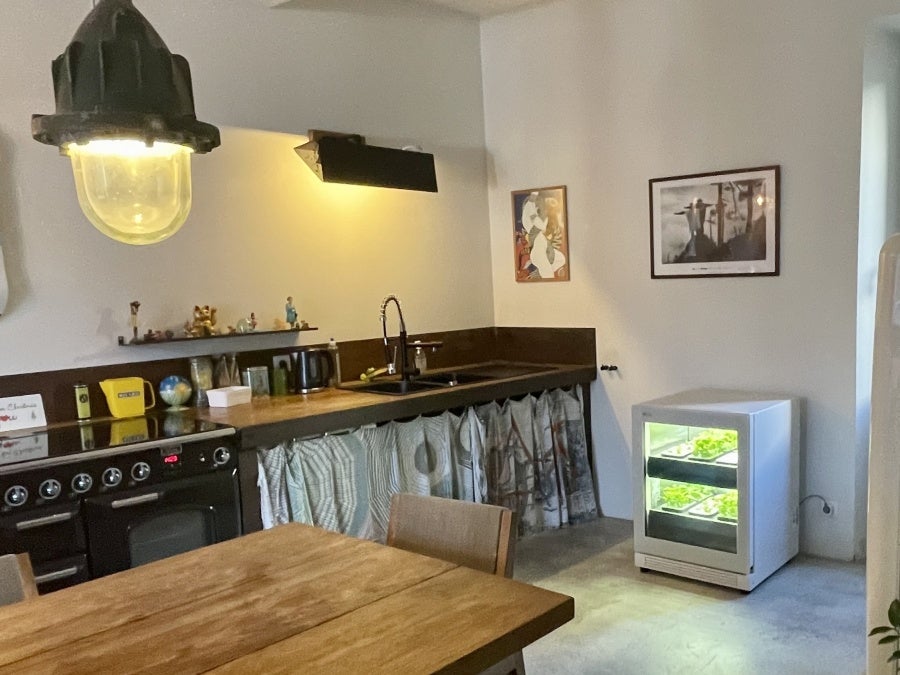
Beyond production: an experiential approach
“We never use the phrase ‘vertical farming’ in our Chinese communications. We don’t even say we sell salad, we say we sell health,” says Hansen.
YesHealth Group has built a namesake visitor experience in Taiwan with guided farm tours, restaurants, supermarkets and lecture areas. More than 50% of its revenue comes from D2C sales. Its own-label products include juices, pesto and veg boxes, and BBQ salad kits.
“Is being a vertical farming company the reason we’re profitable? I’m not sure. We are a food and health company that uses vertical farming to grow some of the products that we sell. But if we were just selling one product I don’t think we could make it,” says Hansen.
YesHealth Group sells technology to partners globally, and in May launched with vertical farming company Leafood in Vilnius, Lithuania.
Also focusing on creating an experience, Hansen says Leafood will create its own “universe” in Lithuania. “Leafood are just like us, all about breaking social norms. Their [latest] marketing campaign is quite daring,” he says.
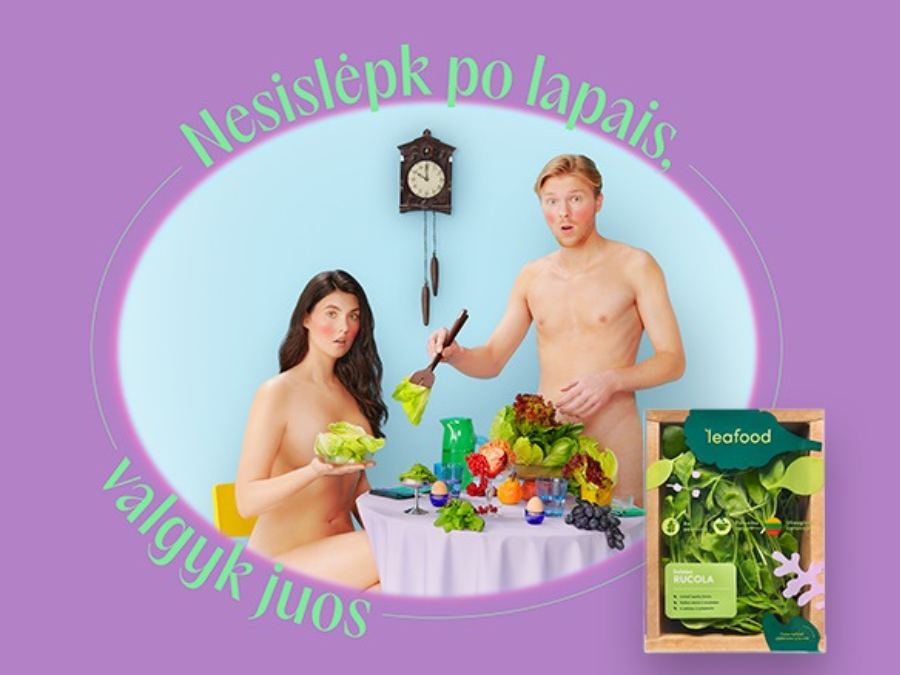
He is alluding to a photo campaign (pictured) of two naked people recreating a familiar image of Adam and Eve hiding behind fig leaves, replaced with lettuce, with the tagline: “Don’t hide behind the leaves, eat them.” Salad is “not part of daily life in Lithuania”, Hansen says, “Leafood wanted to bring it into people’s consciousness”.
French start-up La Grangette has developed a small €1,500 ($1,600) vertical farm and co-founder Thibaut Pradier says one day “every house will be able to grow leafy greens and fruits”.
While for IGS the at-home model is “a gimmick”, Pradier argues his isn’t a “futuristic” vision. “We talk with people like LG that are already selling devices in Asia, so it’s not something futuristic, it’s already happening. Not in Europe, mind,” he says.
Despite being founded in France, Pradier ended up partnering with companies in the Middle East and Asia. He says China, Saudi Arabia, Qatar, Dubai are all “ready for this kind of product”. “Food security is more important than sustainability in these countries,” he adds.
La Grangette’s ambition is to be a leader in seed pods, rather than towers. This is where he sees the biggest opportunity, but until home-farming solutions are more widespread he must focus on both pod and tower. “The technology is nothing extraordinary to be honest,” he says. “It’s about life science.”
Similarly to YesHealth Group, La Grangette sees its towers as more than a piece of food technology. In the US small vertical farms are used in schools and Pradier says they can play a huge part in food education.
La Grangette is working with AI technology to recommend when seed pods be planted. It will have an app providing “a gamification of what is growing and how it’s going to be grown”, Pradier says. “The app is for the user, not the machine – we don’t believe in connecting all products together. People don’t use it most of the time.”
‘Luxury’ and organic produce
Pieterse foresees a growing trend in luxury fresh produce like white strawberries and alternative tomato varieties over the next decade. “People are willing to pay for a strawberry – they think it’s worth more than a head of lettuce… There’s a lot of opportunities there because, especially in certain regions, people are just fed up with bad quality, bad flavour food.”
Organic certification is a muddy area as, unlike the US, in Europe, food cannot be labelled organic if it has not been grown in soil – many vertical farms use hydroponic systems where plants are grown in nutrient-fed water. While most businesses focus on promoting other benefits, van Horen admits the lack of organic certification “doesn’t promote the system”.
Hanson says some customers have refused to work with YesHealth Group “because they couldn’t get their head around the fact we’re not organic”.
For others, sticking to salad leaves makes more commercial sense. GrowUp Farms is stocked in UK retailer Iceland Foods – where its salad bags retail for £1 – and bulk retailer The Food Warehouse. Hofman says there is still a “big market opportunity” in the UK.
Hofman says scaling up is where profit is to be made. Its new Pepperness site in England’s south-east will have the ability to produce 3.5% of the UK’s salad market when producing at capacity. “We’re quite comfortable with focusing on building our credibility as a grower and a supplier in this category and doing what we can to build resilience for the UK in terms of production and supply here,” she says.
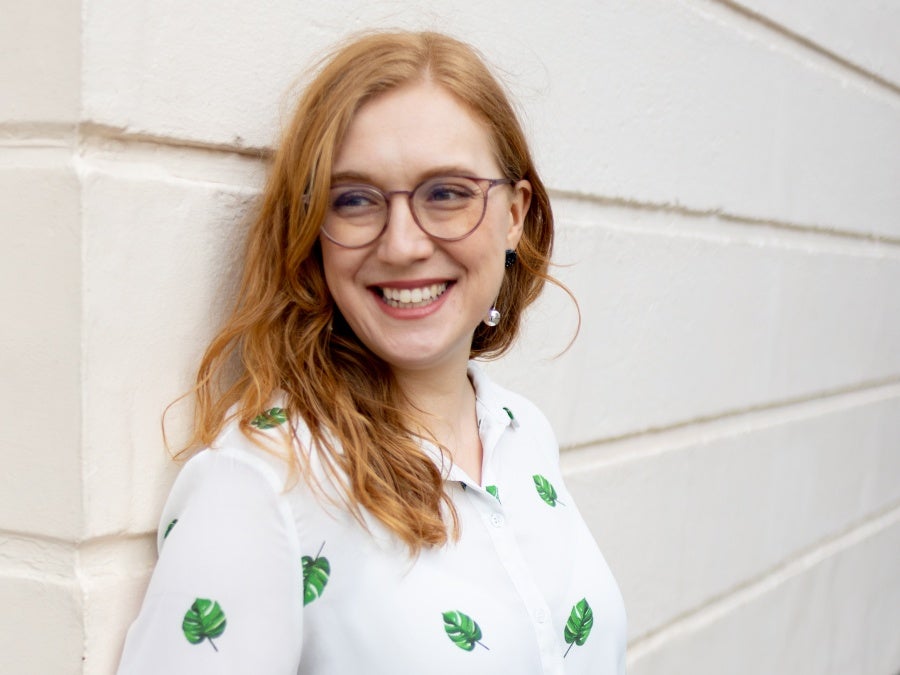
While some have hailed a dramatic end for the industry, others say a little realism is needed as we look to the future. “We need to be more patient,” says Pieterse. “A lot of companies, including Glowfarms, wanted to go really quick and compete with existing agriculture right away. That’s a little too opportunistic.”
“[The industry is] ultimately in a more mature place” now, says Lloyd. “It’s no longer a frothy investment that people think they’re going to get rich quick on. That’s good because these things are investments, like most things in farming, that you get a payback on over years.”
While much remains to be seen, it is clear we need more innovation in agriculture – and controlled-environment farming undoubtedly needs a seat at the table.



